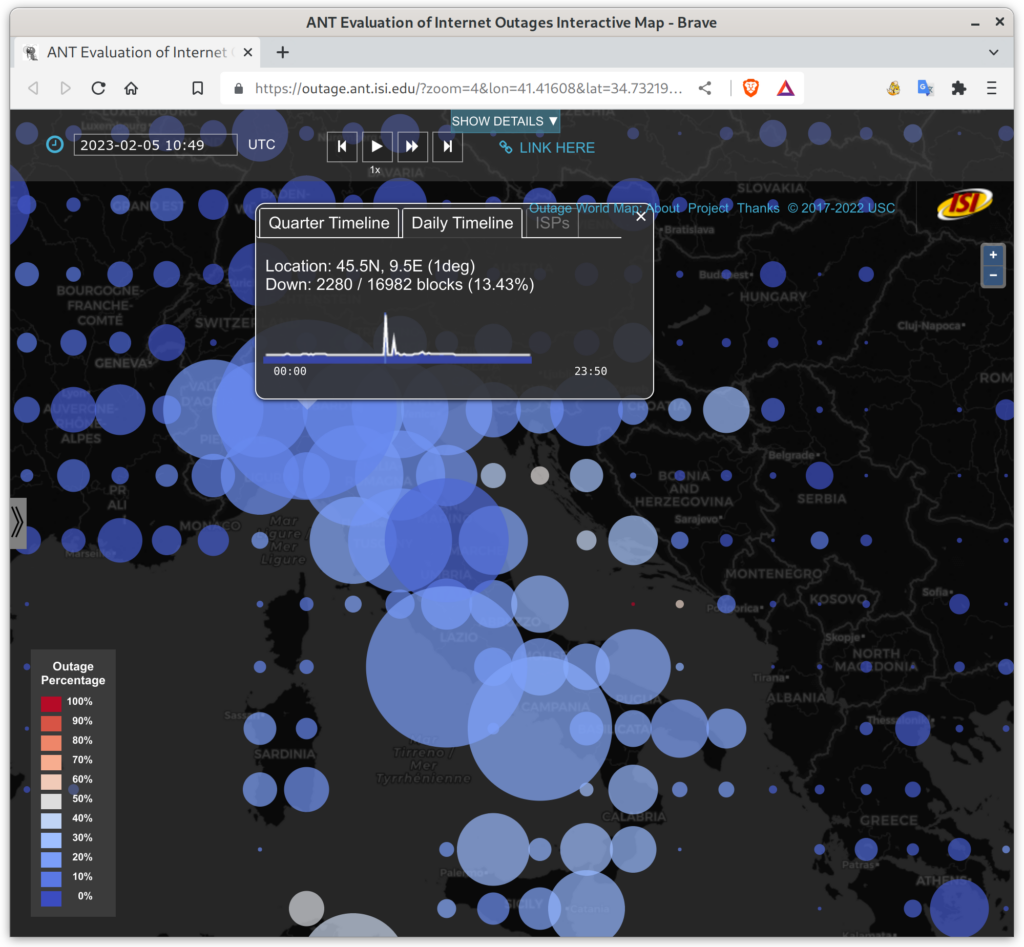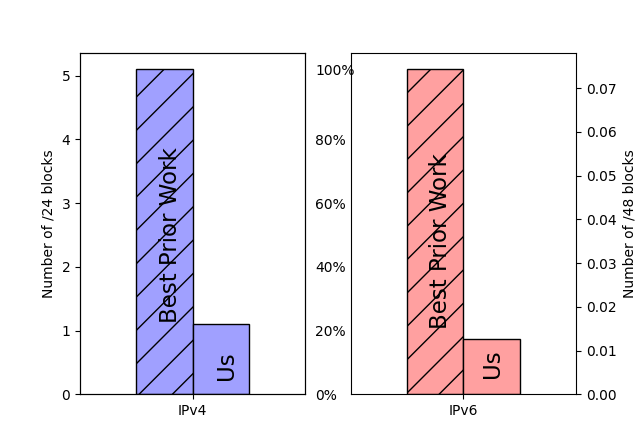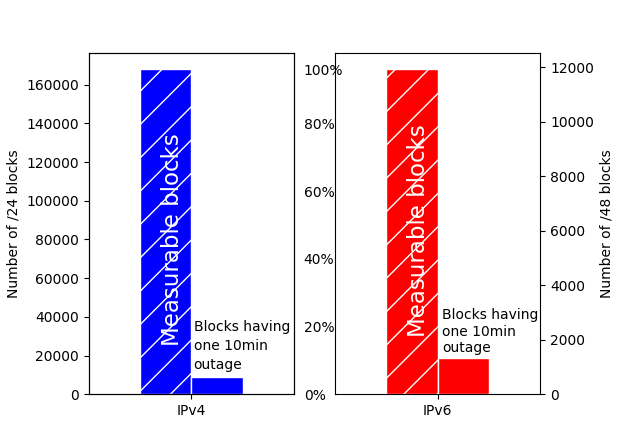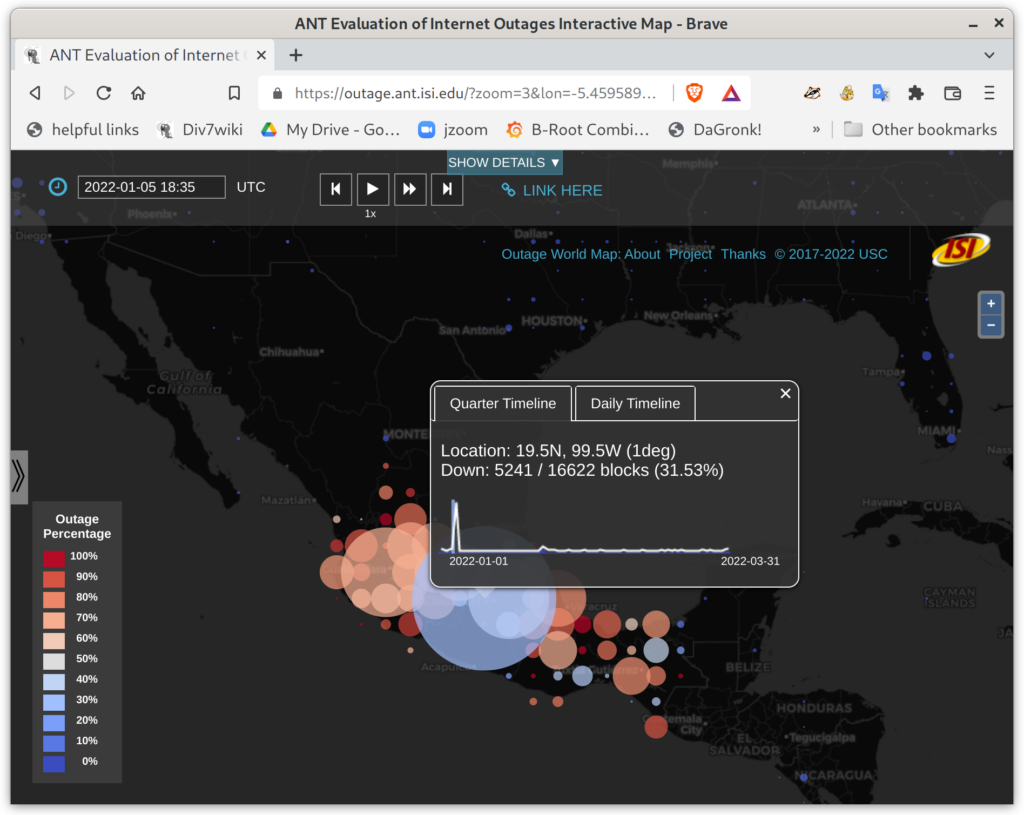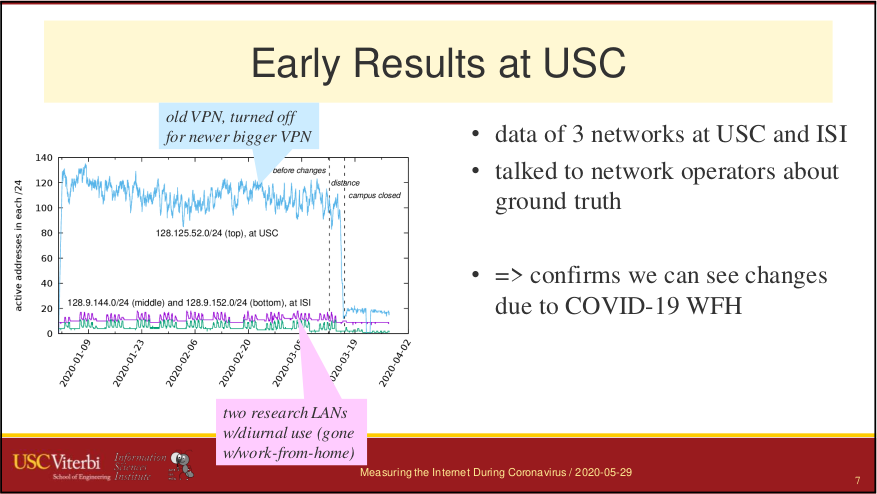We are happy to announce a new project “Measuring the Internet during Novel Coronavirus to Evaluate Quarantine” (MINCEQ).
Measuring the Internet during Novel Coronavirus to Evaluate Quarantine (RAPID-MINCEQ) is a project to measure changes in Internet use during the COVID-19 outbreak of 2020. As the world grapples with COVID-19, work-from-home and study-from-home are widely employed. Implementation of these policies varies across the U.S. and globally due to local circumstances. A common consequence is a huge shift in Internet use, with schools and workplaces emptying and home Internet use increasing. The goal of this project is to observe this shift, globally, through changes in Internet address usage, allowing observation of early reactions to COVID and, one hopes, a future shift back.
This project plans to develop two complementary methods of assessing Internet use by measuring address activity and how it changes relative to historical trends. The project will directly measure Internet address use globally based on continuous, ongoing measurements of more than 4 million IPv4 networks. The project will also directly measure Internet address use in network traffic at a regional Internet exchange point where multiple Internet providers interconnect. The first approach provides a global picture, while the second provides a more detailed but regional picture; together they will help evaluate measurement accuracy.
The project website is at https://ant.isi.edu/minceq/index.html. The PI is John Heidemann. This work is supported by NSF as a RAPID award in response to COVID-19, award NSF-2028279.
